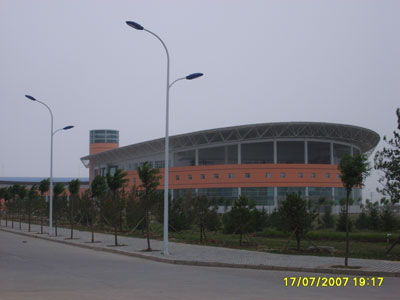| Tools: Save | Print | E-mail | Most Read |
| Traditional Mongolian Medicine in China |
| Adjust font size: |
Traditional medical practices are enjoying a worldwide revival. Mongolian medicine, once criticized as unscientific, is now acknowledged to be highly effective. Mongolian medical treatment traditionally uses a small amount of medicine to treat diseases. Costing less money, it is convenient and easy. Significantly, treatments are not traumatic. Today Mongolian medicine is frequently utilized for treating and preventing chronic and difficult diseases: stomach trouble, liver and gall disorder, coronary heart disease, gynecological disease, and problems related to blood, skin and bone. Until this century the history of traditional Mongolian medicine and its achievements were known only among Asians. An important foundation of Mongolian medicine rests with Indian ayurvedic philosophy. When the Mongol Huns traveled through Mongolian medical texts are rooted in history; some are more than 800 years old. Records indicate that sometime around the 11th century, Mongolians created many medical therapies based upon their environment, culture and lifestyle. By the early 13th century, ancient Mongolian medicine coalesced into a sound medical theory based on unique clinical experiences. From the 14th century onwards during the second spread of Buddhism in Mongolian doctors or emchis became so adept that they have been respected in Central Asia and During the Qing Dynasty (1644-1911) not only emchis but also thirty bone-setting Mongolian doctors called bariachis waited upon Chinese nobility. These doctors introduced various treatments: diet therapy, traditional moxibustion therapy, acupuncture therapy, blood letting therapy, mineral bath therapy, hot-sand therapy and mud therapy, to the northern Chinese. Since the People's Republic of
Inner Mongolia Medical College
Mongolian medical theory Mongolian medicine grew out of life experiences focused around herding, wrestling, riding, and fighting on the vast grasslands. Traditionally the medical arts were under the auspices of the Buddhist lamas. These lama doctors guarded the accumulated knowledge of traditional medicine. Physicians studied the five medical arts: bloodletting, moxibustion, hydrotherapy, massage and acupuncture. Bloodletting is used to relieve hotness factors caused by blood or by xila, a condition that provokes bleeding of wounds, plague, edema, abdominal distension, gout, tuberculosis, etc. The ancient art of cupping allows movement of vital energy and the state of blood in the human body is improved and the disease is cured. Mongolian moxibustion involves the practice of burning mugwort over acupuncture points. Tibetan medicine also adopted this technique. It is used in conjunction with acupuncture and massage to relieve pain and drive out illness. Interestingly, Mongolians have always used water as medicine. They collected water from any source, including the sea, and stored for many years. Water therapy is used especially for stomach problems. Another unique Mongolian treatment involves fermented mare's milk, or koumiss. The koumiss treatment is a dietary treatment, reputed to strengthen people after weakness. It is also used to treat shock or pain in the chest or in heart area. According to Mongolian medical theory, the human body and the nature are a unity of opposites. Nature has "five elements:" earth, water, fire, air and space, while the human body also consists of materials transformed from the "five elements." Doctors explore three sources affecting the corporeal body: heyi or air, xila or heat and badagan or cold; and examine the seven primary components -- food, blood, muscle, fat, bone, marrow and sperm. Mongolian medicine examines relationships between "heyi", "xila", and "badagan" to explain the physiological and pathological phenomenon in human body. "Heyi" is believed to be the body's power to move. It directs thinking, language, external and internal body movement. If "heyi" is unbalanced the healthy status of internal organs will diminish, manifesting as "abnormal mind": sleeplessness and forgetfulness, even mental diseases. "Xila" conveys "hotness." Body temperature, the heat of the organs and spirit are said to be determined by "xila." Too much "xila" manifests in a bitter taste in mouth, sourness or anxiety in mood, and illness. "Badagan" is supposed to be a kind of sticky material in the body, having the nature of coldness. "Badagan" manifests as cold and flu, with much fluid secretion. Thus, Mongolian practitioners examine the interrelationships between the sources and the seven components to find irregularities in order to present a diagnosis. Mongolian doctors also base diagnostics on a patient's experience rather than the Western evaluation based on chemical or blood analyses, charts and X-ray films. Even today some Mongolian medical doctors are also Buddhist monks, especially in Not surprisingly, Mongolian medicinal cures are based on a combination of exploring the body's balance, a man's spiritual harmony and the natural environment. Ancient medical literature cites the use of minerals as medicine, usually in the form of powdered metals or stones. And plants, carefully gathered and harvested, remain the mainstay of Mongolian medicine. According to ancient doctors every plant has use as a medicine. Preserving, gathering and utilizing indigenous wild herbs are part of a Mongolian doctor's education. Another unique branch of Mongolian medicine is carried out by Bariachis -- the specialist bone setters. These people work without medicines or instruments, relying only on their hands to manipulate bones back to their proper position. Bariachis are laymen, without medical training, and they are born into the job, following the family tradition. It appears that this traditional practice is in decline, and that no scientific research has been carried out into it. This treatment is reputed to cure illness linked to bone fracture, joint dislocation, or soft tissue damage. Bone setting treatment has six parts: renovation, fixing, massage, herbal bath, care and recovering. It has the function of releasing the poison and soothing the sinew and quickening the blood. Dom is the Mongolian tradition of household cures. It is very old and based on superstition. For example: a picture of a donkey hung over a child's bed will help it sleep. Dom includes counting the frequency of breathing. Similar to yoga breathing techniques, dom principals to control the breath does help relieve psychological problems and distress. Today medical workers utilize modern laboratory tests along with traditional diagnostic processes. Doctors promote both drug and drugless methods. Medicinal herbs, powders and pills, as well as externally applied heating ointments are prescribed. The range of therapies runs the gauntlet from acupuncture with moxibustion, cranio-therapy (head massage), whole body massages with herbs and oils, diet control, bloodletting, cupping to indefinable spiritual methods using Buddhist rituals and meditation. Many Mongolian healing treatments may appear strange unless one realizes the intention is not simply to cure but to move the ill person out of the time, mind, and body space where the disease or ailment is. Traditional medicines -- Mongolian, Chinese and Tibetan -- have gained worldwide popularity, acting as an alternative to modern Western medicine which can be invasive, traumatic and dependant on chemicals. In recent years (China.org.cn by Valerie Sartor, July 30, 2007) |
| Tools: Save | Print | E-mail | Most Read |
 |
| Related Stories |
|
Product Directory China Search |
Country Search Hot Buys |


